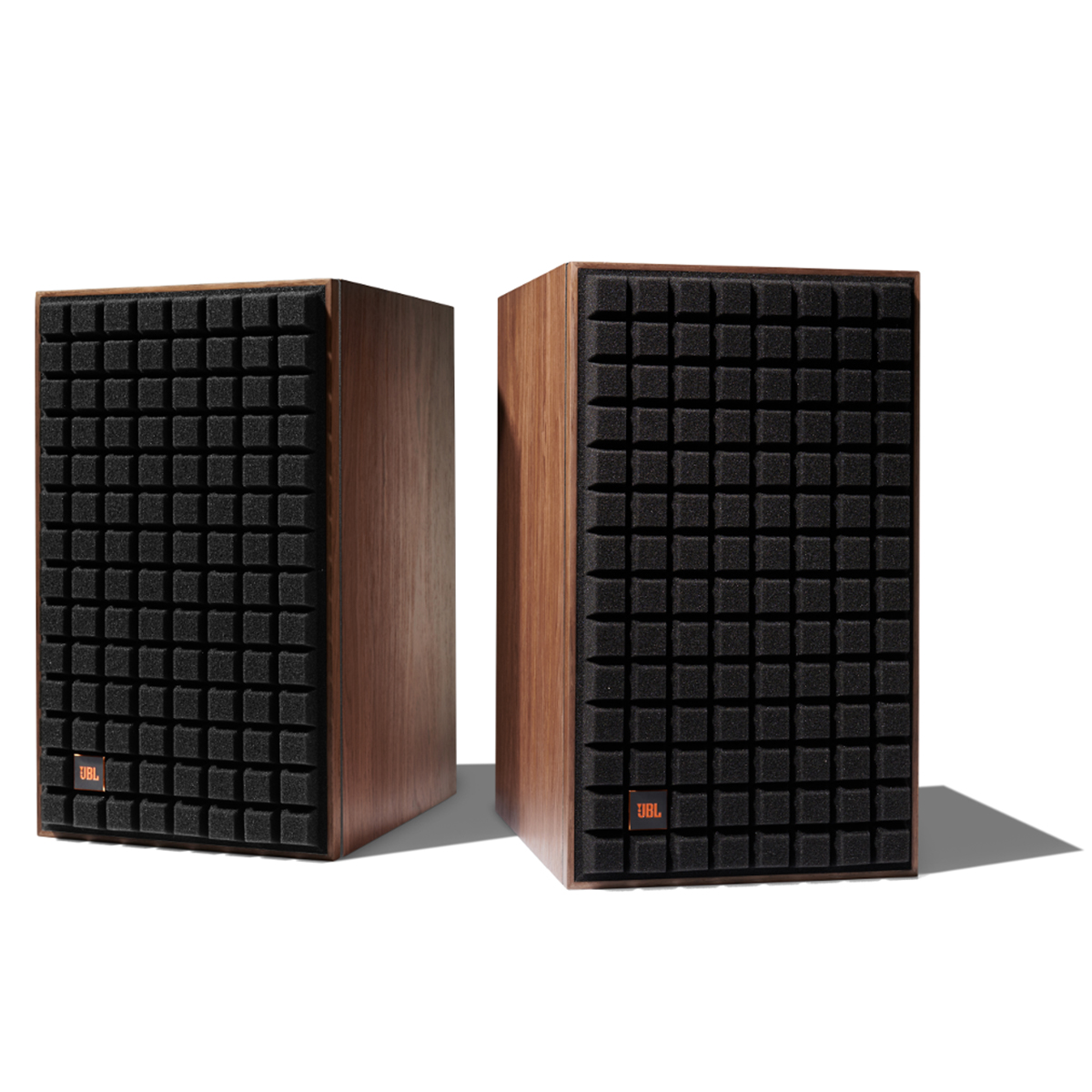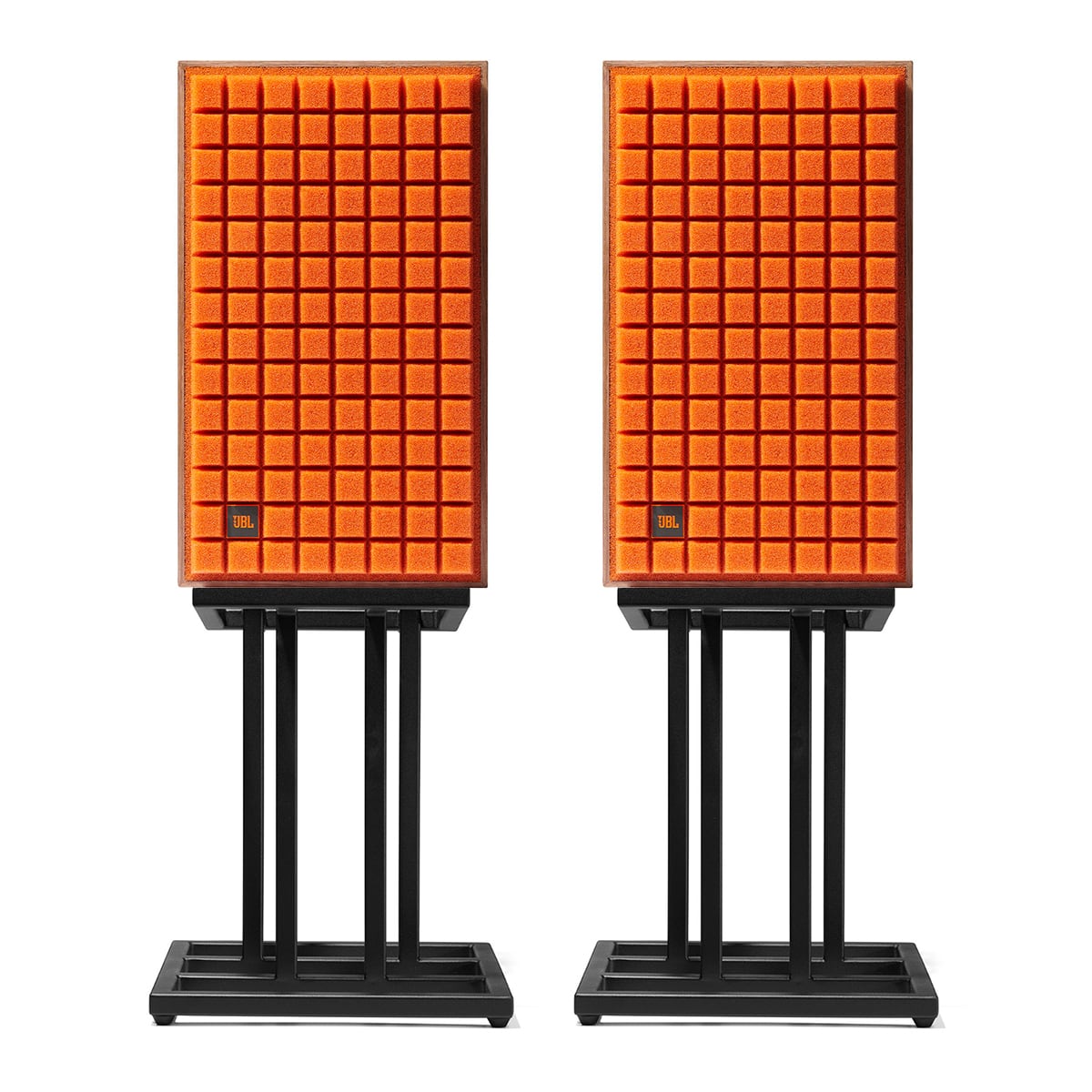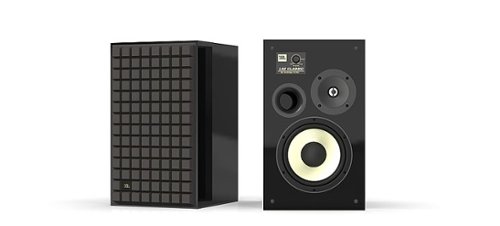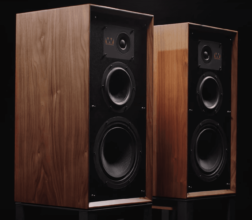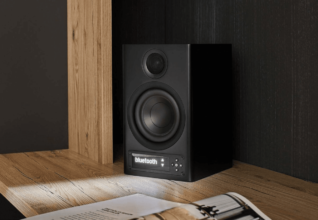JBL L82 Classic Review – Groovy baby
With its flashy look, the new L82 Classic raises the question: Does it only awaken the rocker in you, or can even the discerning listener take a nostalgic trip back in time?
by Stefan Schickedanz
Conducting serious listening tests at HiFi shows is almost an impossible task. And even when you do manage to find a quiet moment without noise from the hallways, the sound impressions rarely leave a positive memory. Either you get bombarded with a few audiophile hits, or something spoils the listening pleasure.
Not so with JBL’s new retro box, the L82 Classic. I first heard it over a year ago at the last classic CES in Las Vegas, under rather unfavorable conditions. But even then, I was captivated by its coherent and superbly lifelike sound.
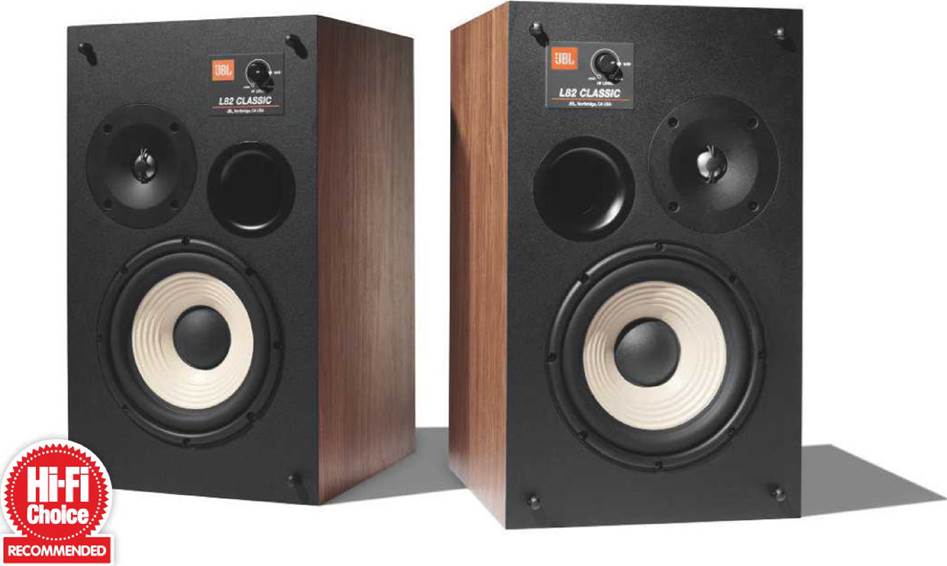
Rack to the Roots
Now, the test under controlled conditions. In a modern listening room, the rustic combination of wood and steel stands seems somewhat out of place. Compared to the hefty monitors in the test field, it is also small. However, for a speaker on a stand, it is quite striking with its 42 centimeters height. With the orange foam grille, which JBL calls Quadrex, it indeed looks like a vintage model from the 1970s. But that can’t be, as the grilles from that era must have turned to dust by now.
Removing the grille enhances the time travel impression: white paper cone with a black dust cap, a knob for adjusting the treble level. All of this existed 50 years ago, so where are the promised technical innovations?
Horn in the USA
Patience. Passionate loudspeaker historians will quickly notice that the tweeter sits in a horn shell, a modern construction. It limits the dispersion angle to what is ideal in a HiFi listening room and was largely unknown in this mild form with a dome 50 years ago.
We already know the tweeter itself from the larger model, the L100 Classic. The material used is titanium, tested in aerospace.
Unlike the larger sister and the historical predecessors, the L82 is a pure two-way speaker. The sound goes directly from the tweeter to the woofer, and that at 1700 Hz, an octave lower than the three-way box. The Californians have confidence in their tweeter, while other competing models would probably overheat like a Lamborghini engine after a few hours of high-rev tests in the Californian sun.
But there are technical reasons for this, as the woofer can’t play as high. Its white cone, described as “cult” by the manufacturer, is made of reinforced paper and is also eight inches (20.3 cm) in diameter. This refers to the size of the cast frame, and the very large surround makes the white cone a bit smaller. Removed from the cabinet, the chassis looks like it comes from a modern JBL sound system and is built to last. Experts will appreciate the huge magnet and the indestructible cast frame. To ensure dynamic performance, the engineers also included a bass reflex tube. The marketing team called it “Slipstream-Port,” although hopefully nothing should ever slip in.
Specs
PRODUCT JBL L82 Classic
ORIGIN China
TYPE 2-way standmount loudspeaker
WEIGHT 12.7kg
DIMENSIONS (WxHxD) 281 x 472 x 316mm
FEATURES
• 25mm titanium dome tweeter
• 200mm paper pulp mid-bass driver
• Quoted sensitivity: 88dB/1W/1m (8ohm)
DISTRIBUTOR Harman International
TELEPHONE 0161 2223325
WEBSITE harman.com
Retro Knob
So what is the purpose of the knob on the front panel, which enhances the time travel impression when looking at the baffle? According to the datasheet, it finely adjusts the entire frequency range of the tweeter up or down. Such tone controls often leave high-end enthusiasts with a sense of imperfection. But it makes sense. If you decorate your living room in the style of the ’70s with upholstered furniture, carpet wallpapers, and Persian cats, you could add some treble to the resulting muffled sound. Conversely, modern, bright rooms might call for a reduction in treble. The speaker itself is suitable for both.
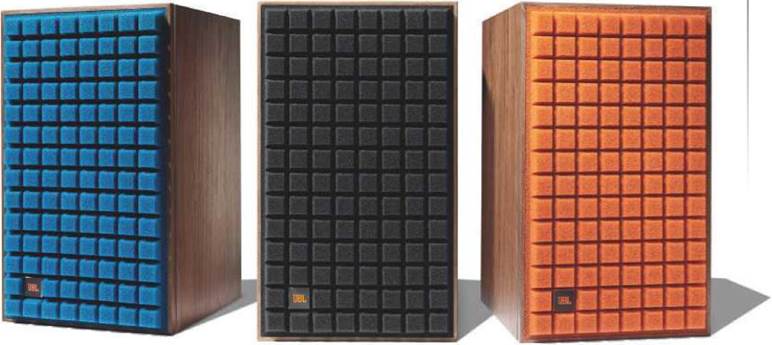
The Quadrex foam grille is available in a choice of black, orange or blue
In the listening room, we had no such desires. Roger Waters’ “Amused To Death” exuded spaciousness and three-dimensionality rarely offered by a two-way speaker. The dynamics were perfect, with the bass kicking in with a richness that can bring a smile to listeners’ faces. However, it was never too fat, and unlike the three-way model, the L82 could handle a fairly wall-adjacent position.
Tori Amos’ “Little Earthquakes” presented an almost sensual female voice in the room, which never pushed forward but seemed to sing out of the vast space. In terms of airiness and three-dimensionality, the JBL also stands out in its class, while it never appears sluggish despite a dose of tonal warmth.
HOW it compares
The only speaker that emulates the L82 Classic’s mix of qualities is its larger L100 Classic stablemate – at twice the price. Where the L82 plays rather fast and loose with hi-fi strictures, the identically priced and similarly sized SCM19 from ATC is an exemplary student and the differences in presentation could hardly be more marked.
Verdict
When you purchase through links on our site, I may earn an affiliate commission. Here’s how it works.

